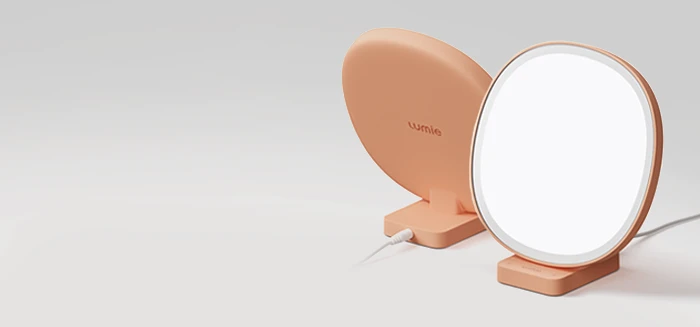Seasonal Affective Disorder Research Papers

J Affect Disord. 2024 Apr 1:350:531-536.
The findings from this analysis support the use of bright light therapy as an effective intervention for symptoms of SAD. Mood symptoms were shown to significantly improve with bright light therapy compared to a placebo. Read the full abstract here.
BMC Psychiatry. 2011 Jan 28;11:17.
A previous study by the same team had compared standard light treatment with short-wavelength blue-enriched white light and found that at 10,000 lux both were highly effective. This time, they used a blue-enriched white light device that provided only 750 lux. Again, both treatments worked equally well with depression ratings, mood, energy levels and sleep quality similar in both groups. Read the full abstract here.
When it comes to lux, LED devices (such as Desklamp and Zest) are often less intense than traditional lightboxes. Studies like this show that it's not the only thing that matters; blue light has specific effects that counteract a lack of lux to provide effective light therapy.
Biol Psychiatry. 2009 Aug 1;66(3):253-8.
There is evidence to show that rods and cones - the light receptors in the retina - respond differently in people with SAD. This study compared electroretinogram (ERG) data from healthy and SAD participants. ERG responses were similar during the summer but, in winter, the rods and cones of people with SAD were much less sensitive than the healthy volunteers; after four weeks of light therapy retinal response was back to normal. Read the full abstract here.
Light therapy for seasonal affective disorder with narrow-band light emitting diodes (LEDs).
Biol Psychiatry. 2006 Mar 15;59(6):502-7.
Short wavelength light in the blue part of the spectrum suppresses melatonin production suppression and influences circadian rhythms so this study investigated using short wavelength light therapy for SAD. Depression scores improved for patients using an blue-LED device (emitting light at 468 nm) every day for 45 minutes. This was one of the first studies to look at treating SAD with something other than traditional white light. Read the full abstract here.
Am J Psychiatry. 2005 Apr;162:656-662.
After pooling nearly thirty years of data, this review concluded that both dawn simulation and bright light therapy were effective ways of treating SAD and were often just as good as antidepressant drugs. Read the full abstract here.
Psychiatr Pol. 2004 Nov-Dec;38(6):1105-14.
Patients in this study received 30mins of 10,000lux phototherapy (another term for light therapy) every morning. Patients reported a significant improvement (57%) in their mood and EEG monitoring showed that they also slept much better (falling asleep quicker, entering deep sleep sooner and sleeping for longer). This is a typical treatment schedule and shows that lightboxes offer a range of benefits. Read the full abstract here.
J Affect Disord. 2002 May;69(1-3):231-236.
Fifty SAD patients with hypersomnia (excessive tiredness or sleep) took part in this study with half of them trying dawn simulation for a week. They each rated how sleepy they felt when they woke up (a psychiatrist also scored them) and dawn simulation was found to be very beneficial. Many SAD sufferers really struggle to get up in the morning so dawn simulators like Bodyclock are useful in tackling this particular symptom. Read the full abstract here.
Lancet. 2002 Dec 7;360(9348):1840-2.
Low levels of the neurotramsmitter serotonin have been linked to depression. This study showed that turnover of serotonin by the brain was lowest in winter. Furthermore, production was directly related to sunlight, rising rapidly during bright spells. This suggests that brain serotonin levels may underlie seasonal mood changes and SAD. Read the full abstract here.
Arch Gen Psychiatry. 1984 Jan;41:72-80.
This is some of the earliest research into SAD and light therapy and was led by Norman Rosenthal. He pioneered the idea of SAD as a real condition and is widely regarded as the expert on SAD. Read the full abstract here.




